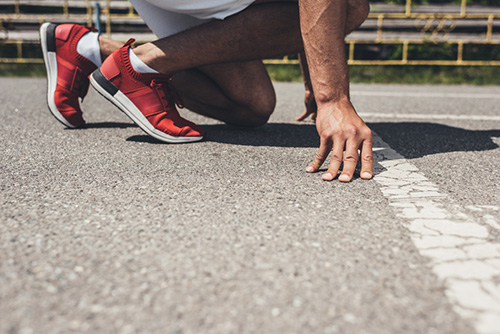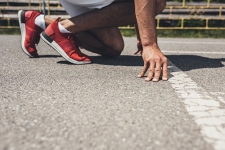
The athletic shoes of today have come a long way from their predecessors, and are highly diversified at that. Present day athletic footwear is designed with specific activities in mind – including running, hiking, baseball, softball, soccer, basketball, football, tennis, and volleyball. And, it’s recommended that if you’re participating in a particular sport more than two times per week you should be fitted for and purchase shoes that have been specifically designed for that sport (such as a running shoe, court shoe, cleats, etc). If you’re the type of individual who participates in a multitude of different activities each week, a cross-training shoe may serve you better for the bulk of your activities; however, “sport specific” shoes may be required in some circumstances.
With all of the above in mind, here are some general tips for finding the right athletic shoe for you:
- Whenever possible, purchase your shoes at a store that specializes in whatever activity it is that you’re wanting to participate in. This means that, if you’re a runner, you’d go to a running store; conversely, a tennis player would want to go to a tennis shop, and a soccer player would find their best shoe experience at a store dedicated to all things soccer related.
- If at all possible, try on shoes at the end of the day. Why, you ask? Well, because our feet tend to swell throughout the course of the day and, by trying on shoes at the end of the day, you’ll be much more likely to find a shoe that will feel just as comfortable at the end of your activity (when your feet are a bit swollen) as they do at the beginning.
- When trying on shoes for any given activity, bring along the socks that you’d normally be wearing with the shoes. And, if you’ve got anything else that needs to go into your shoe (orthotic), on your foot (additional padding or athletic tape), or on your ankle (brace), try to bring those things along, too. That way you can find shoes that fit both your feet and your situation.
- Make sure you’ve got enough room in the toe box so that you can wiggle your toes. Shoes that pinch and are cramped never did anyone any good.
- Speaking of toes, make sure that you’ve got at least a half inch of space between the end of the shoe and the tip of your longest toe.
- Pay attention to the back of the shoe, too. The heel portion should grip your heel firmly to help ensure stability. Shoes that allow your heel to easily slip out when walking or running are NOT the shoes for you.
- Always try on BOTH the left and right shoe to make sure then both fit properly.
- Make sure that you’re tightening the laces adequately AND in the same manner that you would during practice or a competition. And, if your shoes need to be laced in a special manner (due to foot pain or structural anomalies), do that in the store, too.
- Walk around in the shoes, and do so on a variety of surfaces (carpet, tile, etc) too.
So, there you have it! In Part 2 of this series we’ll take some time to explore the different types of athletic shoes so that you’ll know what all is out there AND which might be right for you!
source: aaos.org

